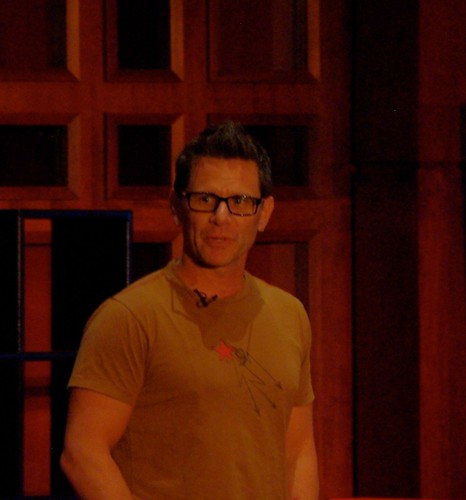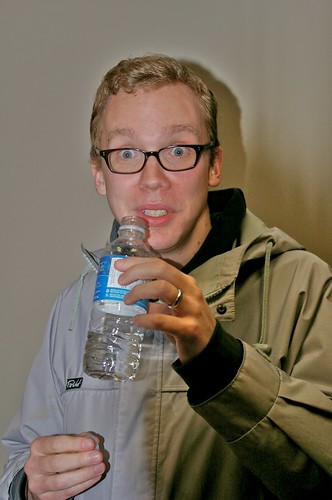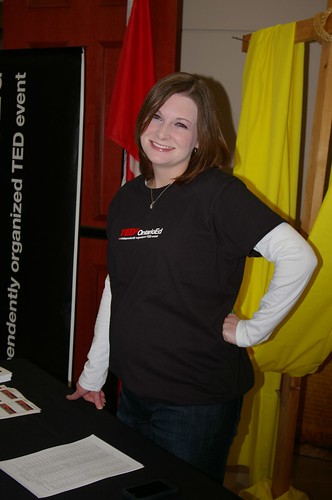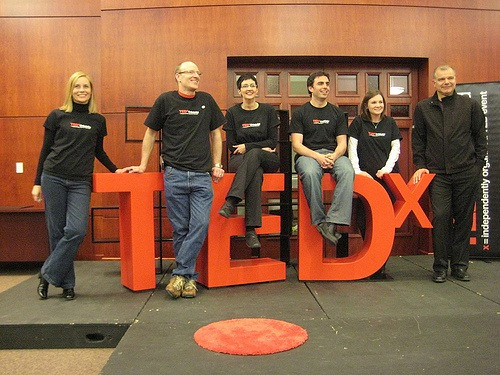Lots of sequels come out in the summer time (I think… Just go with it), and the OTF Teaching and Learning in the 21st Century conference was no exception. I was lucky to attend the conference last February as a panelist discussing my take on the use of social media in the classroom. Then I was doubly lucky to be able to hang out with Will Richardson (who’s played a huge role in influencing my philosophy about technology in the classroom) during the Minds on Media sessions the following day.
For the #OTF21C sequel (check that hashtag on twitter to see an archive of the tweets from the past three days), I got to repeat my panelist role but also became a Minds on Media facilitator (which meant less time picking Will’s brain but more time hanging with cool teachers eager to learn about blogging).
The panel discussion was essentially very similar to the one back in February. I noticed the same tension between those people (students, teachers, consultants) who are working with social media and those people (union representatives) tasked with protecting teachers from the potential dark side of social media. And I noticed Will biting his tongue at times (Excellent restraint, Will!). I just hope that down the road there will be teachers and students and administrators who shake their heads with amusement as they look back on the “old days” when we were all filled with angst about technology. There was one question toward the end of the panel from a teacher who was very concerned that students might be spending too much time in front of screens to the detriment of their physical and socio-emotional well-being. I’ve started to get a little tired and frustrated by questions like this, but I have to exercise a little more patience. I think I replied with something like, “Maybe, but people said the same thing about books, when books became more readily accessible. Same argument; different medium.” It is the same argument, but I have to remember that this is still a new and threatening area for some people so they may not see it as being the same.
After the panel Brian and I braved the record-breaking temperatures outside the hotel to visit Melanie McBride and Jason Nolan at the EDGE lab which is part of Ryerson’s Digital Media Zone. Wow is this place ever mind blowing! Read more about it here. After a tour, we headed upstairs where all the different teams worked. It’s an eclectic group. There were teams working on everything from mobile health apps (VitalHub) to game development (HugeMonster Inc.). And then there were research teams including EDGE lab where my friend Melanie works. The EDGE lab itself was a pretty eclectic group made up of people who brought unique and often opposing perspectives. Noah and Jason demonstrated some soft circuit prototypes they had developed to help adorable little girl communicate in and interact with her peers in spite of her limited speech and motor skills. We had some great conversations (I can’t even begin to attempt to sum them up here) about school and learning (and how the two are quite often mutually exclusive!). It’s incredibly liberating to talk to people who are interested in education but are not constrained by the traditional education system. There are so many ideas we don’t even discuss in education because we know we “can’t do that” in our current system. We walked back to the hotel like zombies, although in fairness I think was 38 degrees in downtown Toronto with a breeze that felt like a gust from a convection oven.
Then there was some much-needed socializing, and that’s all I’ll say about that.
Friday was devoted to Minds on Media. For those of you who are unfamiliar with the Minds on Media process (brilliantly organized by Peter Skillen and Brenda Sherry), unlike traditional PD where one might sign up for a session, sit in a chair and listen to the presenter’s agenda, teachers are free to move from station to station and the agenda is that of the participants. I had a bunch of links and resources prepared but essentially my first question when people arrived was, “So, what do you want to talk about?” It was exhausting, but very rewarding and I loved it when a teacher ran over to me, beaming, saying “I just wrote my first blog post! And I embedded a video!”
I love these conferences because they provide me with a chance to learn as much as (or usually more) than I present, but I also love them because they are, as Melanie would say, affinity spaces. These are spaces where I get to learn how I want with the people who I want to learn with. Thanks to all my friends, old and new, for the great experience.
Doug Peterson, a friend and prolific blogger has posted a number of reflections on his own blog which you can read here.
















